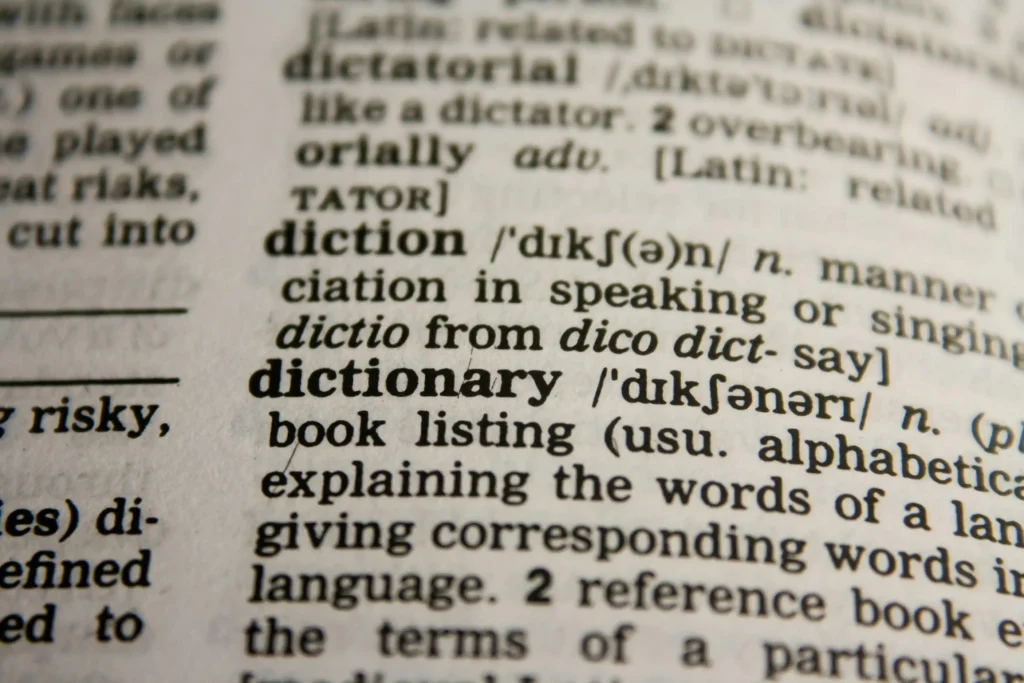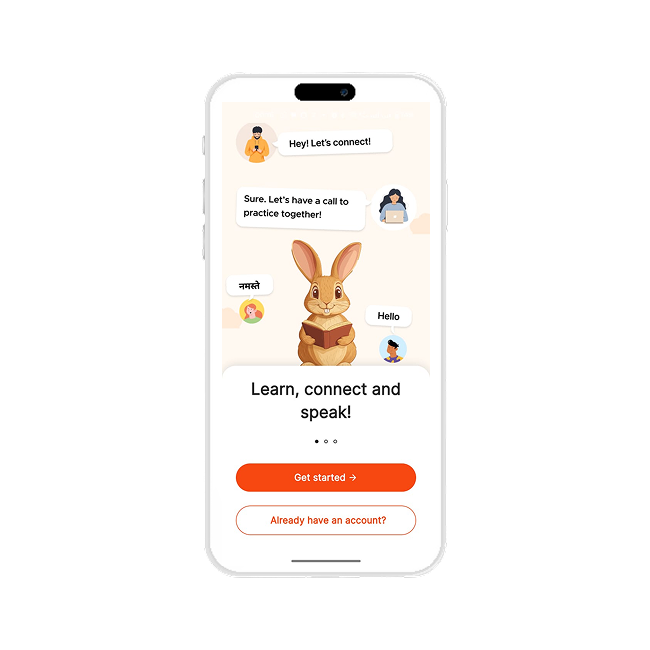In English grammar, two primary ways exist to convey speech or dialogue: Direct Speech and Indirect Speech. Both serve the same purpose—to report what someone has said—but they differ in how the words are presented. In this comprehensive guide, we’ll dive deep into the concept of direct and indirect speech, highlighting their rules, examples, common errors, and tips for mastering them. Plus, we will include a worksheet at the end for practice.
What is Direct Speech?
Direct speech is a way of reporting or quoting someone’s exact words. In English grammar, when we use direct speech, we capture the speaker’s words as they are, without altering them in any way. This form of speech is commonly used in both written and spoken language to present dialogue, making it clear who is speaking and what they are saying. Direct speech adds authenticity and vividness to conversations, which is why it is widely used in storytelling, interviews, books, and day-to-day communication.
Structure of Direct Speech
In direct speech, the speaker’s words are typically enclosed within quotation marks. The sentence consists of two parts: the reporting verb (which tells who is speaking) and the quoted speech (the exact words of the speaker). These two elements are usually connected by a comma or a colon, depending on the sentence structure.
- Reporting verb: This is the verb that introduces the speech. Common reporting verbs include “said,” “asked,” “replied,” “exclaimed,” etc.
- Quoted speech: This is the part where the exact words of the speaker are written. These words appear within quotation marks.
Examples:
- She said, “I am going to the store.”
- Reporting verb: said
- Quoted speech: “I am going to the store.”
- John asked, “Can you help me with this task?”
- Reporting verb: asked
- Quoted speech: “Can you help me with this task?”
- “I will be there at 5 o’clock,” said Alice.
- Reporting verb: said
- Quoted speech: “I will be there at 5 o’clock.”
Notice that in direct speech, the exact words of the speaker are preserved, and the sentence is written as the speaker would say it. This is one of the distinguishing characteristics of direct speech: no changes are made to the words spoken.
Key Features of Direct Speech
- Quotation Marks: The most important feature of direct speech is the use of quotation marks to enclose the exact words of the speaker. Without them, the sentence would be classified as indirect speech or a paraphrased version.
- Punctuation: When writing direct speech, punctuation is very important. Commas are used to separate the reporting verb and the quoted speech. If the sentence is a question, a question mark is placed inside the quotation marks. Similarly, an exclamation mark is used if the speech is an exclamation.
- Example with a question mark: She asked, “Are you coming to the party?”
- Example with an exclamation mark: He shouted, “Watch out!”
- Word Order: The word order in direct speech is exactly as it would be if the speaker were speaking in real life. In other words, the sentence follows the natural structure of spoken language, making it direct and conversational.
- Capitalization: The first word of the quoted speech is always capitalized, even if it follows a comma. This is because the quoted speech is treated as a new sentence.
Why Use Direct Speech?
- Accuracy: Direct speech is used when the exact words of the speaker are important. It maintains the integrity of what was said without any changes or interpretations.
- Vividness: Direct speech adds liveliness to the conversation, making it feel more immediate and engaging. This is why it is often used in novels, plays, and storytelling.
- Clarity: Using direct speech clearly shows who is speaking and what they are saying, which is particularly useful in conversations or dialogues.
What is Indirect Speech?
Indirect speech, also known as reported speech, is a way of reporting or paraphrasing someone else’s words without quoting them directly. Unlike direct speech, where the speaker’s exact words are placed in quotation marks, indirect speech involves expressing the meaning of what was said without repeating the words verbatim. This form of speech is commonly used to report conversations, summarize statements, or provide information while focusing on the content of the speech rather than the speaker’s exact words.

Structure of Indirect Speech
In indirect speech, the quoted speech is transformed into a subordinate clause. The reporting verb (e.g., “said,” “told,” “asked”) is followed by a conjunction (usually “that”) to connect the reported speech. The word order in the reported speech generally follows that of a statement (subject-verb-object). The most significant change between direct and indirect speech is the shift in tenses, pronouns, and time expressions.
- Reporting verb: This introduces the quoted speech. Examples include “said,” “told,” “asked,” “explained,” etc.
- Conjunction: This is used to link the reporting verb with the reported speech. The most common conjunction is “that,” but it may sometimes be omitted in informal speech.
- Reported speech: This is the content of what was said, but it is rephrased in the past tense and often adjusted for pronouns and time expressions.
Example:
- Direct Speech: She said, “I am going to the store.”
- Indirect Speech: She said that she was going to the store.
In indirect speech, the verb “am” in the direct speech is changed to “was,” as the reporting verb “said” is in the past tense. The pronoun “I” becomes “she,” reflecting the change in the point of view.
Key Changes in Indirect Speech
- Tense Change: The most significant change in indirect speech is the shifting of verb tenses. If the reporting verb is in the past tense, the verb in the reported speech generally moves one step back in time.
- Present simple → past simple (e.g., “She plays” becomes “She played”)
- Present continuous → past continuous (e.g., “She is playing” becomes “She was playing”)
- Present perfect → past perfect (e.g., “She has played” becomes “She had played”)
- Past simple → past perfect (e.g., “She played” becomes “She had played”)
- Pronoun Change: Pronouns in direct speech must be changed to reflect the perspective of the reporter. For instance, the pronoun “I” becomes “he” or “she,” and “you” becomes “I” or “we” depending on the speaker.
- Time Expressions: In indirect speech, expressions related to time are often adjusted to reflect the time of reporting. For example, “today” becomes “that day,” “tomorrow” becomes “the next day,” and “yesterday” becomes “the day before.”
- Direct Speech: She said, “I will go tomorrow.”
- Indirect Speech: She said that she would go the next day.

Examples of Indirect Speech
- Direct Speech: “I love reading books,” he said. Indirect Speech: He said that he loved reading books.
- Direct Speech: “Are you coming to the party?” she asked. Indirect Speech: She asked if I was coming to the party.
- Direct Speech: “I am feeling tired,” she said. Indirect Speech: She said that she was feeling tired.
Why Use Indirect Speech?
- Clarity: Indirect speech helps to simplify the communication and avoid the use of quotation marks.
- Reporting: It is commonly used in news reports, formal writing, and storytelling, where summarizing someone else’s speech is more effective.
- Variation: It allows for a more fluid narrative, especially in written texts, where lengthy quotes may disrupt the flow.
Key Differences between Direct and Indirect Speech:
| Feature | Direct Speech | Indirect Speech |
| Quotation Marks | Uses quotation marks around the exact words. | No quotation marks. |
| Pronouns | No change in pronouns. | Pronouns change according to the subject of the reporting sentence. |
| Tense | No change in tense. | The tense of the reported speech may change. |
| Word Order | Word order remains the same. | Word order may change, especially with auxiliary verbs. |
Rules for Converting Direct Speech to Indirect Speech
When transforming direct speech into indirect speech, several rules must be followed to ensure the sentence is grammatically correct.
1. Changes in Pronouns
Pronouns in direct speech change according to the subject and object of the reporting sentence.
- Example:
- Direct: She said, “I will finish the project tomorrow.”
- Indirect: She said that she would finish the project tomorrow.
2. Changes in Tenses
The tense of the direct speech typically shifts back when reported indirectly. This is known as backshifting.
- Present Simple changes to Past Simple.
- Direct: He says, “I work every day.”
- Indirect: He says that he works every day.
- Present Continuous changes to Past Continuous.
- Direct: She is studying, “I am studying now.”
- Indirect: She said that she was studying.
- Present Perfect changes to Past Perfect.
- Direct: I have finished my work, “I have finished it.”
- Indirect: He said that he had finished his work.
- Future Simple changes to would.
- Direct: They will arrive tomorrow, “We will arrive tomorrow.”
- Indirect: They said that they would arrive tomorrow.
3. Changes in Time Expressions
Time expressions in direct speech need to be adjusted in indirect speech.
- Now changes to then.
- Direct: She said, “I am leaving now.”
- Indirect: She said that she was leaving then.
- Today changes to that day.
- Direct: He said, “I am going to the market today.”
- Indirect: He said that he was going to the market that day.
- Tomorrow changes to the next day or the following day.
- Direct: She said, “I will call you tomorrow.”
- Indirect: She said that she would call me the next day.

4. Omitting Quotation Marks
In indirect speech, quotation marks are not used. Instead, the words are reported without them.
- Example:
- Direct: “I will come to the party,” said Bob.
- Indirect: Bob said that he would come to the party.
5. Question Forms
When converting questions from direct to indirect speech, the structure changes slightly. The word order is no longer the same, and the reporting verb usually changes from say to ask or inquire.
- Yes/No Questions:
- Direct: He asked, “Do you like pizza?”
- Indirect: He asked if I liked pizza.
- WH-Questions (questions beginning with who, what, when, where, etc.):
- Direct: She asked, “What time is the meeting?”
- Indirect: She asked what time the meeting was.
6. Commands and Requests
In indirect speech, commands and requests are usually reported using asked or told, and the verb is often followed by to.
- Direct: “Close the door,” he said.
- Indirect: He told me to close the door.
- Direct: “Please be quiet,” she requested.
- Indirect: She requested that I be quiet.
Common Mistakes in Direct and Indirect Speech
Direct and indirect speech are both essential for reporting what someone else has said. While direct speech involves quoting the exact words of the speaker, indirect speech involves paraphrasing those words. However, many learners make common mistakes while converting between the two forms. Below are some of the frequent errors made in both direct and indirect speech, along with explanations of why they occur and how to avoid them.
1. Incorrect Use of Tenses
One of the most common mistakes when using indirect speech is the incorrect shift of tenses. In indirect speech, the tense of the reporting verb generally changes to one of the past forms (except in certain cases, like when the information is universally true or still relevant). For example:
- Direct Speech: She says, “I am going to the market.”
- Incorrect Indirect Speech: She said that she is going to the market.
(Here, the present tense “is” should be changed to the past tense “was.”) - Correct Indirect Speech: She said that she was going to the market.
The tense shift rule is important for maintaining consistency in the sentence. In most cases, the tense in the direct speech moves one step back in time in indirect speech (present becomes past, past becomes past perfect, etc.).
2. Failure to Change Pronouns
Another frequent mistake is neglecting to change the pronouns when converting direct speech to indirect speech. In direct speech, pronouns (like “I,” “you,” “we,” etc.) depend on the speaker, while in indirect speech, they should reflect the perspective of the person reporting the speech.
- Direct Speech: “I will call you later,” he said.
- Incorrect Indirect Speech: He said that I will call you later.
(The pronouns “I” and “you” are incorrect in indirect speech.) - Correct Indirect Speech: He said that he would call me later.
(The pronouns “I” and “you” should be changed to “he” and “me.”)
It’s crucial to pay attention to who is speaking and adjust the pronouns accordingly.
3. Omitting the Reporting Verb
Sometimes, learners forget to include the reporting verb when converting direct speech into indirect speech, which can make the sentence unclear or grammatically incorrect.
- Direct Speech: “We are going to the park,” they said.
- Incorrect Indirect Speech: They that they were going to the park.
(The reporting verb “said” is missing, which makes the sentence incomplete.) - Correct Indirect Speech: They said that they were going to the park.
The reporting verb is necessary to identify the source of the quote and to properly frame the sentence.
4. Wrong Punctuation in Direct Speech
Punctuation is key when writing direct speech. Many learners make errors by using incorrect punctuation or omitting punctuation altogether. The most common mistakes are:
- Using a comma instead of a period or a question mark.
- Forgetting to close the quotation marks.
- Incorrect: He asked, “Where are you going”
- Correct: He asked, “Where are you going?”
The punctuation inside the quotation marks should correspond to the type of sentence being quoted, whether it is a question, exclamation, or statement.

5. Incorrect Word Order in Indirect Speech
Another common error in indirect speech is maintaining the word order of direct speech without adjusting it for indirect speech. In indirect speech, the structure often changes slightly. For instance, in indirect speech, the subject usually comes before the verb.
- Direct Speech: “Are you coming with us?” she asked.
- Incorrect Indirect Speech: She asked if are you coming with us.
- Correct Indirect Speech: She asked if I was coming with them.
In indirect speech, we must maintain correct word order to ensure the sentence makes sense.
6. Not Changing the Time Expressions
When converting direct speech to indirect speech, time expressions must be adjusted to reflect the change in the timeframe. Words like “today,” “tomorrow,” “yesterday,” and “now” are often changed to their past or future equivalents in indirect speech.
- Direct Speech: “I will meet you tomorrow,” she said.
- Incorrect Indirect Speech: She said that she would meet me tomorrow.
(The word “tomorrow” should be changed.) - Correct Indirect Speech: She said that she would meet me the next day.
Always remember to change time expressions based on when the speech is being reported.
7. Using Direct Speech in Situations that Call for Indirect Speech
Finally, learners sometimes use direct speech in contexts where indirect speech is more appropriate, especially in formal writing. For example, in academic or professional contexts, indirect speech is preferred to convey information more concisely.
- Incorrect: “The report needs to be revised,” said the manager.
- Correct: The manager said that the report needed to be revised.
Using indirect speech in more formal settings improves clarity and professionalism.
Worksheet: Practice Converting Direct to Indirect Speech
Part A: Convert the following sentences into indirect speech.
- “I am going to the park,” he said.
- “Where are you going?” she asked.
- “Please help me with my homework,” he requested.
- “She has left the office,” said John.
- “Will you join me for dinner?” asked Tom.
- “I finished my assignment last night,” she said.
- “What time does the train leave?” he asked.
Part B: Identify and correct the mistakes in the following indirect speech sentences.
- She asked me that I wanted to go to the party.
- He said that he will arrive soon.
- They said that they was waiting for the bus.
- “I have been working all day,” he said, but she told me he had worked all day.
- She said to come earlier tomorrow.
Share this post with your friends and family who are eager to enhance their English skills. Let’s inspire and empower each other on this incredible language-learning path. Together, we can achieve greatness! So, what are you waiting for? Visit EnglishBhashi today and embark on an exciting adventure of language learning.
You can also try one of our Official Application ENGLISHBHASHI available in Play Store with which you can refine your English Skills we assure you that you will be able to speak English much better in just 30 Days.
FAQ’s for Direct and Indirect Speech
What is Direct Speech?
Direct speech quotes the exact words a person speaks, enclosed in quotation marks. For example: He said, "I am going to the store."
What is Indirect Speech?
Indirect speech paraphrases what someone said without using their exact words. For example: He said that he was going to the store.
How do you convert Direct Speech to Indirect Speech?
To convert direct to indirect speech, you usually change the pronouns, verb tenses, and remove the quotation marks. For example: "I am happy," becomes "She said that she was happy."
When do you use Indirect Speech?
Indirect speech is used to report or summarize what someone said, often in formal writing or when the exact words are not important.
What are the main rules for changing tenses in Indirect Speech?
In indirect speech, the tense usually shifts one step back. For example, the present simple becomes past simple ("He says, 'I like pizza'" becomes "He said that he liked pizza").


